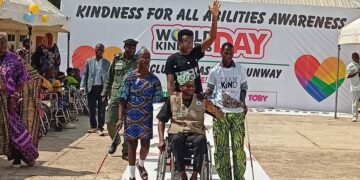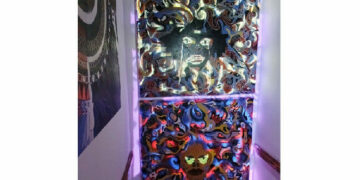Ebrohimie Road: A Museum of Memory, a new documentary about Nigerian and Africa’s first literary Nobel Laureate, Wole Soyinka is scheduled to premiere in July 11, 2024. Screenwriter and director of the film, Kọ́lá Túbọ̀sún spoke to LEADERSHIP Books & Arts on the purpose and objectives of the documentary.
There are a handful of documentaries on Soyinka. The recent in the works being The Man Died, a fictionalized version of the laureate’s book of similar title.
But whilst The Man Died focused on Soyinka’s conflict with Nigeria, his imprisonment between 1967 to 1969, and what happened during and post his prison term, Ebrohimie Road centers on the house he lived in as a lecturer at the University of Ibadan (UI), before and after imprisonment. It explores events between 1967 to 1972 related to Soyinka, and events about those connected to the house, after he left UI.
“Ebrohimie Road is a most significant part of Soyinka’s life,” said Túbọ̀sún. “It is where he lived before he went to prison. He lived in UI for 5 years, spent two of those years in prison. Post his imprisonment, he wrote The Man Died, which became one of the prominent books in his literary output. Viewers will get an insight into a part of Soyinka’s life that I believe had a major significance in the person he became. Leaving UI in anger, helped propel him more to the global limelight as a literary genius and human rights defender.”
Túbọ̀sún noted that Soyinka’s contentious exit from UI, and the titular residence, were for several reasons: his prison experience, his feelings that then ongoing civil war was unjustified, and – his ruined carvings which contributed to his inability to feel at home at Ebrohimie Road. “He said his colleagues at UI were weird with him after his imprisonment. He was also denied tenure by the school.”
On the inspiration behind the documentary, the author, Yoruba translator and UI alumni, said he has always been fascinated by a photo of Soyinka on the cover of his favourite book by the laureate ‘Ibadan’. It wasn’t until much later, post his graduation from UI, that he discovered the photographed house is in Ibadan, and still in existence.
“The house still exists and is occupied by a Professor Nelson Fasino. Coincidentally, everyone who had lived in the house are either involved in English or Theatre Arts.”
This knowledge sparked the storyteller’s curiosity, about the house, those who have lived in it, around it, as well as Soyinka’s memory of Ebrohimie Road (which Soyinka absolutely refused to return to not even to film the documentary).
“I was interested about what happened in UI, and the environment at the time. I spoke to those who had lived there, and in the house after his second wife left around 1989 about the role of the house overtime.”
Providence intervened by way of a transformational arts grant from the Open Society in 2023, that enabled Tubosun take up a short documentary project, with himself debuting as a screenwriter and director.
“I didn’t plan to be a filmmaker or writer. I didn’t think anyone else had the passion I had for the story, or knew all the things I wanted to discover. I also wanted to have control of the creative process.”
Ebrohimie Road featured commentaries by UI’s Prof Remi Raji, UI alumni and critically acclaimed poet, Niyi Osundare, Odia Ofemun, Wole Soyinka’s brother-in-law, Kunle Idowu, his first son Dr Ola, his third daughter Barr Moremi, Dr Dan Esebaye, Professor Kolapo, Femi Ayuba – Soyinka’s assistance in the 60s and Professor Nelson Fasino – the present occupant of the house. Cinematography was done by prominent, veteran Nigerian filmmaker, Tunde Kelani.
Having experienced the process of the audio-visual storytelling format, Túbọ̀sún is hooked, and looking forward to doing more in the medium.
He hopes the documentary will emphasize the importance of documentation, how history is documented and narrated in Nigeria, and challenge Nigeria to better tend to the documentation of its histories, and thus make history more presentable to present generation.
“History is not only documented in books. Film is a good way of documenting and teaching history to the younger generation.”





